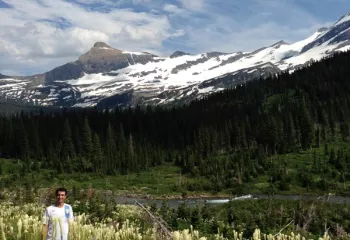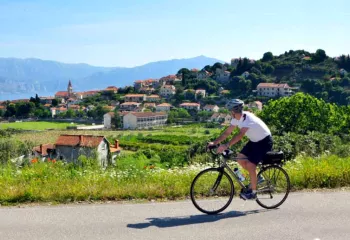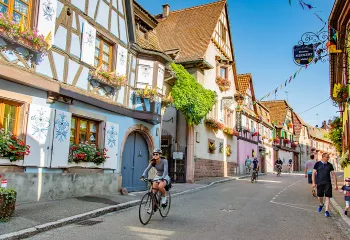Glaciers, massive conglomerations of ice, snow and rock, are among the world's greatest wonders. But they're also slowly disappearing. These natural phenomena, which have come and gone throughout Earth's long geological history, appear to be in the process of documenting another chapter in our planet's story. But while most glaciers are receding at an alarming rate, certain destinations still provide an abundance waiting to be appreciated. What many don't realize is that many of Earth's most beautiful places, while devoid of glaciers today, were actually sculpted and created by these fascinating features and are home to unforgettable scenery.
Glaciers require cold temperatures and serious time to develop. When snow remains on the ground year-round and is continuously supplemented, the resulting weight compresses and eventually forms the snow into ice. As these conditions persist, the ice expands like a slowly opening fist, carving and pushing through anything in its way. As the "living" ice gradually spreads out, it envelops all obstacles and the resulting pressure compresses and pulverizes everything beneath it into dust. The blackened gritty façade of some ice is evidence of this destruction. As the ice continues to change, air pockets within are demolished--this absence of air increases the crystallization of ice, which scatters blue hues of sunlight like a prism, and results in the easily recognizable and exceptionally beautiful turquoise color often associated with glaciers.
When in pursuit of these icy behemoths, an ideal region to visit is the Swiss Alps. Switzerland's many glaciers can be seen from relatively low altitudes and are a constant part of the landscape in the Bernese Highlands and Valais regions. The world-famous Glacier Express Train on Backroads' Switzerland Walking & Hiking Tour presents a chance to travel comfortably beneath these looming frozen giants as you make your way to the charming mountain town of Zermatt. From there, you'll have the opportunity to see the legendary Gorner Glacier up close from the west side of the Monte Rosa Massif.
While seeing these glaciers in person is an experience you won't soon forget, setting foot on the ice itself is another thing entirely. We offer guests this very opportunity on our New Zealand Walking & Hiking Tour with a visit to Franz Josef Glacier. This renowned glacier descends 1,000 feet into a temperate rainforest and is part of the Te Wahipounamu World Heritage Site. In places like Seward, Alaska, the change in glacial fortunes is on clear display. Upon entering Kenai Fjords National Park, a series of dated signs mark the retreat of the notorious Exit Glacier. Though it has diminished significantly over the last century, it still spills out from the magnificent Harding Ice Field. A steep trek from the base of the glacier leads you to a realm of ice and snow reminiscent of Star Wars' Planet Hoth. Here you can take in views of both the endless expanse of a wintry glacial landscape as well as the wildflower-strewn summer terrain you just traversed.
Global warming has shortened winters and lessened snowfall, causing glaciers to recede and leave geologic evidence of their passing. Near-vertical mountain faces and trough-shaped valleys in Yosemite National Park illustrate the enormous power of expanding ice. A visit to Yosemite with Backroads, or to the Western Fjiordlands of Norway, reveals the signs most associated with glaciated landscapes. As glaciers descend into the ocean they leave behind U-shaped valleys with rounded bottoms and steep cliffs, ideal locales for outdoor adventure. Forming and fading, glaciers mark their existence with an indelible print upon the landscape, creating some of nature's most spectacular landscapes. Knowing that roughly 90% of the world's glaciers are in retreat, there's no time like the present to appreciate the wonder of nature's magnificent ice sculptures.

















